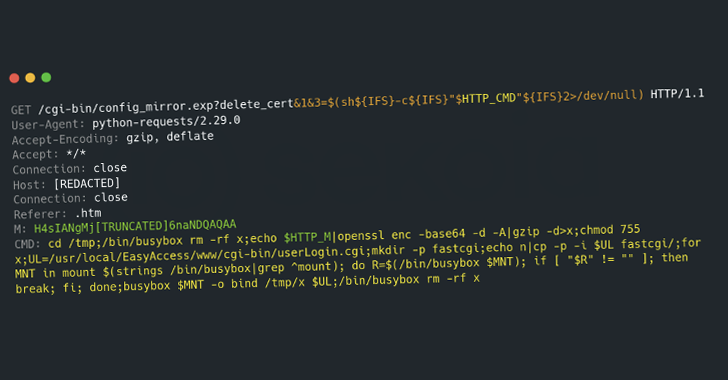A significant security flaw identified as CVE-2025-22457 has been discovered in Ivanti Connect Secure (ICS) VPN appliances, placing over 5,000 devices at risk of remote code execution attacks. This vulnerability, rated with a CVSS score of 9, is a stack-based buffer overflow that allows unauthenticated attackers to execute arbitrary code on affected systems.
Discovery and Initial Response
Ivanti addressed this vulnerability in February 2025, initially misidentifying it as a production bug. However, by early April, the company acknowledged ongoing exploitation of the flaw. Cybersecurity firm Mandiant reported that a Chinese state-sponsored group, designated UNC5221, has been actively exploiting this vulnerability since mid-March 2025. The attackers have been deploying sophisticated malware, including in-memory droppers and backdoors, to infiltrate and persist within compromised networks.
Scope of the Vulnerability
The affected versions include:
– Ivanti Connect Secure versions up to 22.7R2.5
– Pulse Connect Secure 9.x
– Ivanti Policy Secure versions up to 22.7R1.3
– ZTA Gateways versions up to 22.8R2
Despite the availability of patches since February, The Shadowserver Foundation reported on April 6, 2025, that 5,113 vulnerable instances remain exposed on the internet. Notably, many of these are older Pulse Connect Secure 9.x appliances, which have reached their end-of-support as of December 2024 and will not receive further updates.
Implications and Recommendations
The exploitation of CVE-2025-22457 underscores the persistent threat posed by unpatched vulnerabilities in critical infrastructure. Organizations utilizing affected Ivanti products are strongly advised to:
1. Update Systems Promptly: Apply the latest patches provided by Ivanti to mitigate the vulnerability.
2. Conduct Comprehensive Security Audits: Utilize Ivanti’s Integrity Checker Tool (ICT) to detect signs of compromise. If indicators of compromise are found, perform a factory reset and reinitialize devices with the latest software version.
3. Monitor Network Activity: Implement robust monitoring to detect unusual activities, such as repeated HTTP requests to specific endpoints or unauthorized access attempts.
4. Enhance Security Measures: Deploy intrusion detection systems (IDS) and endpoint detection and response (EDR) solutions to identify and respond to potential threats effectively.
The Cybersecurity and Infrastructure Security Agency (CISA) has added CVE-2025-22457 to its Known Exploited Vulnerabilities catalog, emphasizing the urgency for organizations to address this issue promptly.
Conclusion
The active exploitation of this critical vulnerability highlights the importance of timely patch management and proactive security practices. Organizations must remain vigilant, ensuring that all systems are updated and continuously monitored to defend against evolving cyber threats.



